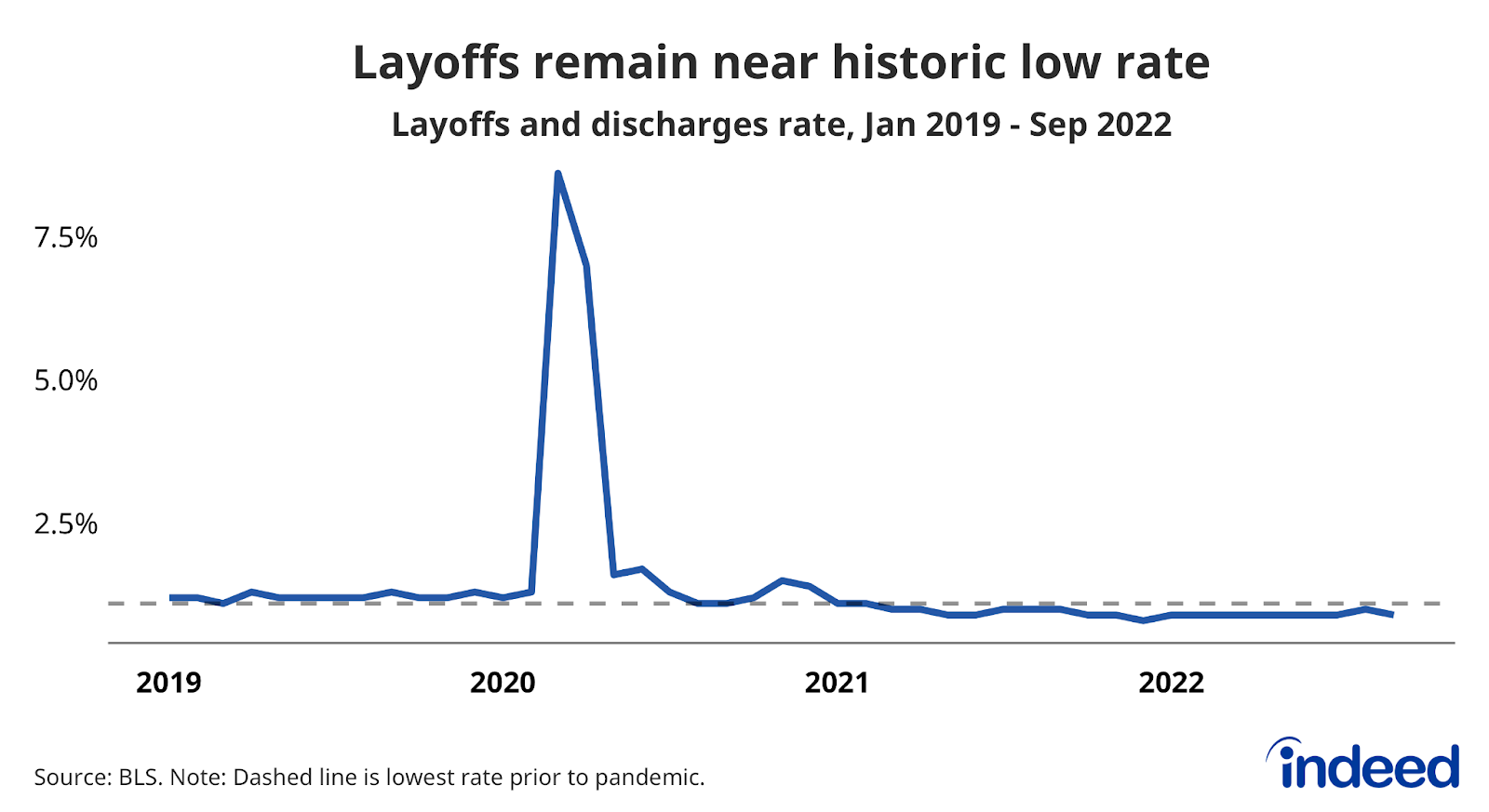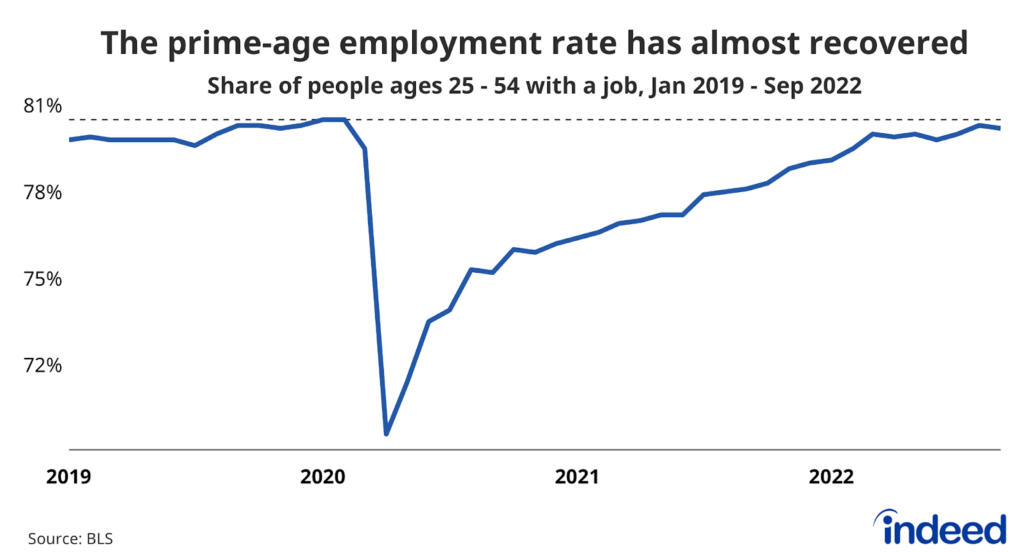Key Points:
- Demand for workers remains robust with the latest data showing roughly 1.9 job openings for every unemployed worker.
- The moderating quits rate and the still low layoff rate show a labor market slowing down but not throwing workers out of jobs.
- While the labor market is slowing down, it may still be moving too quickly for monetary policy makers who are willing to hit the breaks hard.
After the shock of last month’s report, the September JOLTS data is returning to a familiar story: demand for workers remains robust. By all the key metrics in this report, the labor market is resilient. Job openings still vastly outnumber unemployed workers, the quits rate remains elevated and layoffs are still well below pre-pandemic levels. Some energy has been sapped from the labor market, but it keeps on running.
Job openings rebounded after their dramatic drop in August, registering at 10.7 million on the last business day of September. That means there were roughly 1.9 job openings for every unemployed worker, a rise in a metric closely watched by the Federal Reserve. Chair Jay Powell and his colleagues are likely frustrated by this stubborn metric and continued strength could increase their comfort in hiking interest rates.
The overall quits rate held steady, but the private sector rate did decline slightly. The rate for Accommodation and Food Services, which includes bars, restaurants and hotels, dipped after spiking in August. The moderation of the quits rate from last years’ highs points in combination with a steady unemployment rate points toward a labor market slowdown that isn’t throwing people out of jobs. In fact, the layoff rate ticked down. September was the 19th straight month the layoff rate was below pre-pandemic all-time low. Interestingly, layoffs in the Information sector, which includes tech companies, declined dramatically in the data.
If last month’s report raised your concern level about rapidly deteriorating demand for workers, take some comfort this month. If you took comfort that demand might be moderating last month, be slightly more concerned. Regardless of your view point, the US labor market keeps powering ahead. At least for now.



